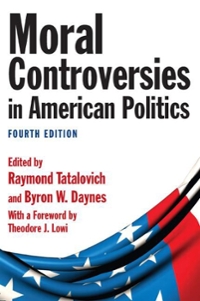Question
1. Which of the following is true of public goods? a. They are non-rival and non-excludable b. They are rival and non-excludable c. They are
1. Which of the following is true of public goods?
| a. | They are non-rival and non-excludable | |
| b. | They are rival and non-excludable | |
| c. | They are rival and excludable | |
| d. | They are non-rival and excludable |
2. If the cross-price elasticity of demand between beer and nuts is negative:
| a. | beer and nuts are substitutes | |
| b. | an increase in the price of beer will cause a decrease in the equilibrium price of nuts | |
| c. | an increase in the price of beer will have no effect on the equilibrium price of nuts | |
| d. | an increase in the price of beer will cause an increase in the equilibrium price of nuts |
Which of the following would NOT be a favoured strategy for promoting economic growth by free market advocates?
| a. | Government funding of research | |
| b. | Encourage entrepreneurship and risk | |
| c. | Encourage competition through deregulation | |
| d. | Reduced taxes to increase incentives |
3. The average price of airline tickets from Brisbane to Sydney in a destination will tend to decrease if:
| a. | there is a surplus at the current price | |
| b. | the quantity supplied is less than the quantity demanded at the current price | |
| c. | the current price is below equilibrium | |
| d. | all of the other answers are true |
4. If an unexpected event results in all the hotel and motel accommodation in a small town being booked out for the weekend, the immediate supply curve (i.e. this weekend) is:
| a. | perfectly inelastic | |
| b. | downward sloping | |
| c. | perfectly unit elastic | |
| d. | perfectly elastic |
5. Which of the following is an expected internal economy of scale in a growing / expanding hotel chain?
| a. | The chain has to reduce the price of its rooms as it adds new hotels to its operations | |
| b. | The hotel chain has to pay higher prices for its inputs as it grows in size | |
| c. | The chain benefits from local improvements in infrastructure such as roads and airports | |
| d. | Reduced administrative costs through centralised management functions
|
6. Which of the following is the most likely source of funding for economic development via tourism in developing economies?
| a. | Domestic savings | |
| b. | Foreign aid | |
| c. | Government investment | |
| d. | Private foreign investment |
7. Data from the economy of a tourism destination shows that for every dollar spent by tourists in the region $0.5 dollar (50 cents) leaks out of the regional economy. What is the tourism multiplier for this region?
| a. | 1.5 | |
| b. | 2.00 | |
| c. | 4.00 | |
| d. | 0.5 |
8. Which of the following is NOT an example of trade liberalisation?
| a. | Removing import quotas | |
| b. | Reducing import tariffs | |
| c. | Reducing export subsidies | |
| d. | Increasing export subsidies |
9. If people who are concerned about coronavirus cancel their international holiday plans and decide to take a domestic holiday instead, one would expect the demand for domestic holidays to increase (all other things remaining equal). In terms of supply and demand curves this is best represented as:
| a. | a shift to the left of the demand curve | |
| b. | a movement down along the demand curve | |
| c. | a movement up along the demand curve | |
| d. | a shift to the right of the demand curve |
10. If an investment is likely to become obsolete quickly what is the most important criterion for appraising the investment?
| a. | High rate of return | |
| b. | Fast payback | |
| c. | Value of money when payback occurs | |
| d. | Duration of earnings |
Step by Step Solution
There are 3 Steps involved in it
Step: 1

Get Instant Access to Expert-Tailored Solutions
See step-by-step solutions with expert insights and AI powered tools for academic success
Step: 2

Step: 3

Ace Your Homework with AI
Get the answers you need in no time with our AI-driven, step-by-step assistance
Get Started


